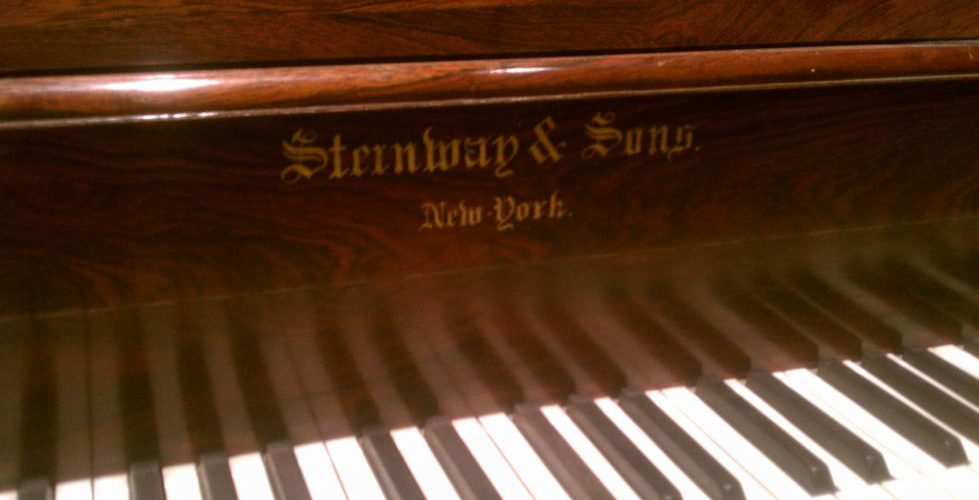Piano Character
After spending many hours over several days looking for the right piano, I’ve had a chance to think a lot about piano character. Here is what I’ve come up with.
Firstly, you have the physical appearance: unlike books, pianos can be judged by their covers, and this will point you in the right direction. Rounded legs, intricately laced music stands, and deep mahogany color look more appropriate for classical music than a jazz combo. Rectangular legs, simple lines, and a duller black finish fit the picture for a blues club rather than next to a harp in an orchestra. In this broad sense, the sound of a piano generally fits its look.
Character can also be attributed, in part, to overtones. These are essentially pitches that resonate subtly but aren’t played directly. For example, if you hold down the sustain pedal, strike a low C loudly and then mute that C string with your fingers, other strings (in a specific harmonic pattern) will resonate even though you didn’t play them. These are overtones, and the degree to which they occur affects the fullness of the sound.
As with most things, handmade pianos are higher in quality than those which aren’t. The smaller grands in the front of the store are almost all machine-made. High quality piano construction involves a lot of manual assembly (although I’m not sure to what degree). If you listen enough for it, you’ll recognize the simple sound of manufactured pianos versus the richness of pianos that involve more manual labor.
Pianos also have varying degrees of brightness, which is a tone characteristic and somewhat subjective. A bright sound is sharper (but not in pitch, just timbre) and a mellow tone is duller. For example, notes played on the trumpet tend be bright and shrill compared to the same notes on an oboe. Steel strings on a guitar are brighter and clearer than the smooth and subdued nylon strings.
It’s important to know that the brightness of pianos can be tweaked in varying degrees. After a piano has been banged on a lot in a practice room, it will sound pretty bright. In that case, the felts can be inexpensively reworked to un-brighten the overall sound. Going the other direction isn’t very feasible, however.
A piano’s character has much more scientific complexity and acoustical explanation than what is provided here, but these thoughts are a good starting guide. Read more on what to look for in a piano:
- How To Choose a Piano » (in the show room)
- How To Pick a Piano » (at the keys)
- Best Piano Brands » (IMO)
- More Tips for Buying A Piano » (PianoWorld article)

One Reply to “Piano Character”
Comments are closed.